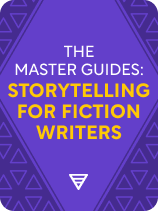

This article is an excerpt from the Shortform book guide to "The Master Guides: Storytelling for Fiction Writers" by Shortform. Shortform has the world's best summaries and analyses of books you should be reading.
Like this article? Sign up for a free trial here.
What does it mean to infuse your stories with your unique voice? How authentic should it be?
You’re unique, so your voice as a storyteller is unique. No one else can provide the same blend of experience, personality, and style. Your unique voice is a powerful way to connect with your audience and set your work apart from the crowd.
Keep reading to learn how to use your voice in a story and let your audience in on you as a person.
Voice in a Story
One component of a great story is the storyteller’s unique voice. In his book Unleash the Power of Storytelling, Rob Biesenbach contends that, in addition to telling your audience something about themselves, a good story tells them something about you. By revealing something about who you are, the right story humanizes you. Your voice in a story illustrates how you see the world, communicates how you’re unique, and makes you memorable.
In On Writing Well, nonfiction writer William Zinsser contends that identity is a writer’s most recognizable quality. If someone likes your identity and the way you tell stories, they’ll seek out more of your stories because they’re interested in what you have to say and how you say it.
To develop your unique style, start by writing for yourself. Zinsser explains that your identity will shine through when you write about things that you want to write about. Or, ask yourself what you want to read, and write about that. By letting your interests direct your writing topic, you’ll be more passionate when writing about it.
In The Practice, nonfiction writer Seth Godin offers a caveat to this advice: Sharing your unique voice doesn’t always mean sharing your “authentic” voice. There’s a common misconception that successful artists should strive for authenticity by sharing their innermost thoughts and feelings. But, Godin points out that very few things are truly authentic—almost everything we do is the result of a series of intentional choices. Godin advises you to create art in such a way that the audience has what feels like an authentic experience—which doesn’t necessarily involve using your authentic voice.
For example, if you wanted to write an effective personal essay, you wouldn’t just tear a page out of your journal that contains unfiltered, authentic thoughts. You’d need to make choices about the structure of your essay, the dialogue, and the characters. You’d need to decide which of your inner thoughts the audience needs to know and which don’t serve the story. While your writing voice certainly isn’t “fake,” it’s also not an exact match for the voice you use in everyday life.

———End of Preview———
Like what you just read? Read the rest of the world's best book summary and analysis of Shortform's "The Master Guides: Storytelling for Fiction Writers" at Shortform.
Here's what you'll find in our full The Master Guides: Storytelling for Fiction Writers summary:
- How to capture and communicate emotional magic through fiction
- Advice from successful authors and storytelling experts
- The five steps of writing a story, from ideating to publishing






